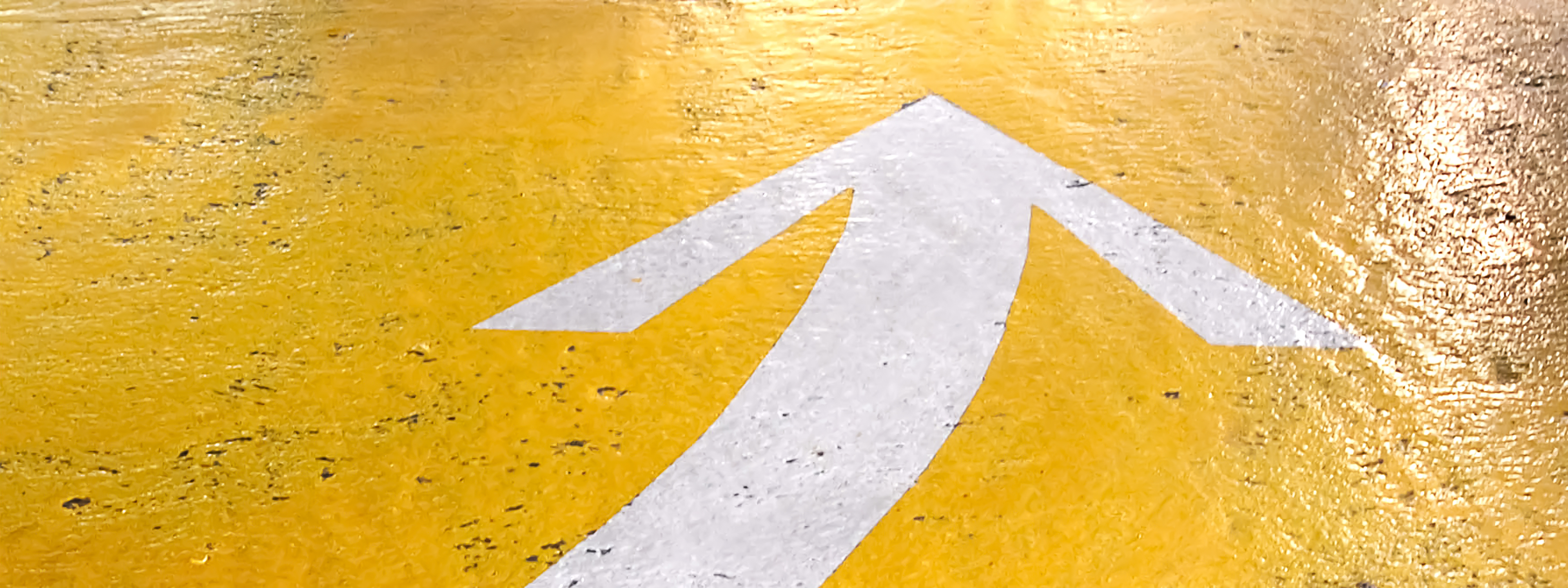
Information regarding the antidumping and countervailing duty petitions on Hardwood and Decorative Plywood from Indonesia, the People’s Republic of China, and the Socialist Republic of Vietnam
19 min read
The Petition
On May 22, 2025, the Coalition for Fair Trade in Hardwood Plywood ("Petitioner") filed antidumping duty ("ADD") and countervailing duty ("CVD") petitions on imports of hardwood and decorative plywood ("Hardwood and Plywood") from Indonesia, the People's Republic of China ("China") and the Socialist Republic of Vietnam ("Vietnam"). The ADD petition alleges that imports of Hardwood and Plywood from the targeted countries are being sold in the United States at less than fair value (that is, "dumped"). The CVD petition alleges that the Governments of the targeted countries are providing countervailable subsidies with respect to the manufacture, production, and export of Hardwood and Plywood. Petitioner alleges that the domestic industry has been materially injured and is threatened with further material injury by the subject imports.
1. Petitioner has defined the products covered by the petition as follows:
The merchandise covered by the investigations is hardwood and decorative plywood, and certain veneered panels as described below. For purposes of this proceeding, hardwood and decorative plywood is defined as a generally flat, multilayered plywood or other veneered panel, consisting of two or more layers or plies of wood veneers in combination with a core or without a core. The veneers, along with the core, may be glued or otherwise bonded together. A hardwood and decorative plywood panel must have at least either the face or back veneer composed of one or more species of hardwood, softwood, or bamboo. Hardwood and decorative plywood may include products that meet the American National Standard for Hardwood and Decorative Plywood, ANSI/HPVA HP-1-2024 (including any revisions to that standard).
For purposes of the investigations a "veneer" is a slice of wood regardless of thickness which is cut, sliced or sawed from a log, bolt, or flitch. The face and back veneers are the outermost veneer of wood on either side of the core irrespective of additional surface coatings or covers as described below. The core of hardwood and decorative plywood consists of the layer or layers of one or more material(s) that are situated between the face and back veneers. The core may be composed of a range of materials, including but not limited to hardwood, softwood, particleboard, or medium density fiberboard (MDF).
All hardwood and decorative plywood is included within the scope of the investigations regardless of whether or not the face and/or back veneers are surface coated or covered and whether or not such surface coating(s) or covers obscures the grain, textures, or markings of the wood. Examples of surface coatings and covers include, but are not limited to: ultra violet light cured polyurethanes; oil or oil-modified or water-based polyurethanes; wax; epoxy-ester finishes; moisture-cured urethanes; paints; stains; paper; aluminum; high pressure laminate; MDF; medium density overlay (MD0); and phenolic film. Additionally, the face veneer of hardwood and decorative plywood may be sanded; smoothed or given a "distressed" appearance through such methods as hand-scraping or wire brushing.
All hardwood and decorative plywood is included within the scope even if it is trimmed; cut-to-size; notched; punched; drilled; or has undergone other forms of minor processing. All hardwood and decorative plywood is included within the scope of the investigation, without regard to dimension (overall thickness, thickness of face veneer, thickness of back veneer, thickness of core, thickness of inner veneers, width, or length). However, the most common panel sizes of hardwood and decorative plywood are 1219 x 1829 mm (48 x 72 inches), 1219 x 2438 mm (48 x 96 inches), and 1219 x 3048 mm (48 x 120 inches). Subject merchandise also includes hardwood and decorative plywood that has been further processed in a third country, including but not limited to trimming, cutting, notching, punching, drilling, or any other processing that would not otherwise remove the merchandise from the scope of the investigations if performed in the country of manufacture of the in-scope product. The scope of the investigation excludes the following items: (1) structural plywood (also known as "industrial plywood" or "industrial panels") that (a) is certified, manufactured, and stamped to meet U.S. Products Standard PS 1-09, PS 2-09, PS-122, or PS 2-10 for Structural Plywood (including any revisions to that standard or any substantially equivalent international standard intended for structural plywood), including, but not limited to, the "bond performance" requirements set forth at paragraph 5.8.6.4 of that Standard and the performance criteria detailed at Tables 4 through 10 of that Standard, and (b) has a core made entirely of one or more of the following wood species: Pseudotsuga menziesii (Douglas Fir), Larix occidentalis (Western Larch), Tsuga heterophylla (Western Hemlock), Abies spp. (True Firs like Grand Fir, Pacific Silver Fir), Picea spp. (White Spruce, Engelmann Spruce), Pinus spp. (Lodgepole Pine, Jack Pine), Picea glauca (White Spruce), Pinus banksiana (Jack Pine), and Abies balsamea (Balsam Fir); (2) products which have a face and back veneer of cork; (3) hardwood plywood subject to the antidumping and countervailing duty orders on hardwood plywood from China. See Hardwood Plywood Products from the People's Republic of China, 83 Fed. Reg. 504 (Dep't Commerce Jan. 4, 2018) (amended final determination of sales at less than fair value (LTFV) and AD order); and Hardwood Plywood Products from the People's Republic of China, 83 Fed. Reg. 513 (Jan. 4, 2018) (CVD order); (4) multilayered wood flooring, as described in the antidumping duty and countervailing duty orders on multilayered wood flooring from China. See Multilayered Wood Flooring from the People's Republic of China, 76 Fed. Reg. 76,690 (December 8, 2011) (amended final determination of sales at less than fair value (LTFV) and AD order); and Multilayered Wood Flooring from the People's Republic of China, 76 Fed. Reg. 76,693 (Dep't Commerce December 8, 2011) (countervailing duty order), as amended by Multilayered Wood Flooring from the People's Republic of China: Amended Antidumping and Countervailing Duty Orders, 77 Fed. Reg. 5,484 (Dep't Commerce February 3, 2012); (5) multilayered wood flooring with a face veneer of bamboo or composed entirely of bamboo; (6) plywood which has a shape or design other than a flat panel, with the exception of any minor processing described above; (7) products made entirely from bamboo and adhesives (also known as "solid bamboo"); and (8) Phenolic Film Faced Plyform (PFF), also known as Phenolic Surface Film Plywood (PSF), defined as a panel with an "Exterior" or "Exposure 1" bond classification as is defined by The Engineered Wood Association, having an opaque phenolic film layer with a weight equal to or greater than 90g/m3 permanently bonded on both the face and back veneers and an opaque, moisture resistant coating applied to the edges.
Also excluded from the scope of the investigations are wooden furniture goods that, at the time of importation, are fully assembled and are ready for their intended uses. Also excluded from the scope of the investigations is "ready to assemble" (RTA) furniture. RTA furniture is defined as (A) furniture packaged for sale for ultimate purchase by an end-user that, at the time of importation, includes (1) all wooden components (in finished form) required to assemble a finished unit of furniture, (2) all accessory parts (e.g., screws, washers, dowels, nails, handles, knobs, adhesive glues) required to assemble a finished unit of furniture, and (3) instructions providing guidance on the assembly of a finished unit of furniture; (B) unassembled bathroom vanity cabinets, having a space for one or more sinks, that are imported with all unassembled hardwood and hardwood plywood components that have been cut-to-final dimensional component shape/size, painted or stained prior to importation, and stacked within a singled shipping package, except for furniture feet which may be packed and shipped separately; or (C) unassembled bathroom vanity linen closets that are imported with all unassembled hardwood and hardwood plywood components that have been cut-to-final dimensional shape/size, painted or stained prior to importation, and stacked within a single shipping package, except for furniture feet which may be packed and shipped separately.
Also excluded from the scope of the investigations are kitchen cabinets that, at the time of importation, are fully assembled and are ready for their intended uses. Also excluded from the scope of the investigations are RTA kitchen cabinets. RTA kitchen cabinets are defined as kitchen cabinets packaged for sale for ultimate purchase by an end-user that, at the time of importation, includes: (1) all wooden components (in finished form) required to assemble a finished unit of cabinetry; (2) all accessory parts (e.g., screws, washers, dowels, nails, handles, knobs, hooks, adhesive glues) required to assemble a finished unit of cabinetry; and (3) instructions providing guidance on the assembly of a finished unit of cabinetry. Excluded from the scope of the investigations are finished table tops, which are table tops imported in finished form with pre-cut or drilled openings to attach the underframe or legs. The table tops are ready for use at the time of import and require no further finishing or processing. Excluded from the scope of the investigations are finished countertops that are imported in finished form and require no further finishing or manufacturing
Imports of Hardwood and Plywood are primarily entered under the following HTSUS numbers:
| 4412.10.0500; | 4412.31.0520; | 4412.31.0540; | 4412.31.0560; | 4413.31.0620; | 4412.31.0640; | 4412.31.0660; |
| 4412.31.2510; | 4412.31.2520; | 4412.31.2610; | 4412.31.2620; | 4412.31.4040; | 4412.31.4050; | 4412.31.4060; |
| 4412.31.4070; | 4412.31.4080; | 4412.31.4140; | 4412.31.4150; | 4412.31.4155; | 4412.31.4160; | 4412.31.4165; |
| 4412.31.4180; | 4412.31.4200; | 4412.31.4500; | 4412.31.4850; | 4412.31.4860; | 4412.31.4863; | 4412.31.4865; |
| 4412.31.4866; | 4412.31.4869; | 4412.31.4875; | 4412.31.4880; | 4412.31.5130; | 4412.31.5135; | 4412.31.5150; |
| 4412.31.5155; | 4412.31.5160; | 4412.31.5165; | 4412.31.5170; | 4412.31.5175; | 4412.31.5235; | 4412.31.5255; |
| 4412.31.5260; | 4412.31.5262; | 4412.31.5264; | 4412.31.5265; | 4412.31.5266; | 4412.31.5268; | 4412.31.5270; |
| 4412.31.5275; | 4412.31.6000; | 4412.31.6100; | 4412.31.9100; | 4412.31.9200; | 4412.32.0520; | 4412.32.0540; |
| 4412.32.0560; | 4412.32.0570; | 4412.32.0620; | 4412.32.0640; | 4412.32.0670; | 4412.32.2510; | 4412.32.2520; |
| 4412.32.2530; | 4412.32.2610; | 4412.32.2630; | 4412.32.3130; | 4412.32.3135; | 4412.32.3140; | 4412.32.3150; |
| 4412.32.3155; | 4412.32.3160; | 4412.32.3165; | 4412.32.3170; | 4412.32.3175; | 4412.32.3185; | 4412.32.3235; |
| 4412.32.3255; | 4412.32.3265; | 4412.32.3275; | 4412.32.3285; | 4412.32.5600; | 4412.32.5700; | 4412.33.0620; |
| 4412.33.0640; | 4412.33.0670; | 4412.33.2630; | 4412.33.3235; | 4412.33.3255; | 4412.33.3265; | 4412.33.3275; |
| 4412.33.3285; | 4412.33.5700; | 4412.34.2600; | 4412.34.3235; | 4412.34.3255; | 4412.34.3265; | 4412.34.3275; |
| 4412.34.3285; | 4412.34.5700; | 4412.39.4051; | 4412.39.4052; | 4412.39.4059; | 4412.39.4061; | 4412.39.4062; |
| 4412.39.4069; | 4412.39.5050; | 4412.41.0000; | 4412.42.0000; | 4412.51.1030; | 4412.51.1050; | 4412.51.3111; |
| 4412.51.3121; | 4412.51.3141; | 4412.51.3161; | 4412.51.3175; | 4412.51.4100; | 4412.52.1030; | 4412.52.1050; |
| 4412.52.3121; | 4412.52.3161; | 4412.52.3175; | 4412.52.4100; | 4412.91.0600; | 4412.91.1020; | 4412.91.1030; |
| 4412.91.1040; | 4412.91.3110; | 4412.91.3120; | 4412.91.3130; | 4412.91.3140; | 4412.91.3150; | 4412.91.3160; |
| 4412.91.3170; | 4412.91.4100; | 4412.92.0700; | 4412.92.1120; | 4412.92.1130; | 4412.92.1140; | 4412.92.3120; |
| 4412.92.3150; | 4412.92.3160; | 4412.92.3170; | 4412.92.4200; | 4412.94.1020; | 4412.94.1030; | 4412.94.1040; |
| 4412.94.1050; | 4412.94.3110; | 4412.94.3111; | 4412.94.3120; | 4412.94.3121; | 4412.94.3130; | 4412.94.3131; |
| 4412.94.3140; | 4412.94.3141; | 4412.94.3150; | 4412.94.3160; | 4412.94.3161; | 4412.94.3170; | 4412.94.3171; |
| 4412.94.3175; | 4412.94.4100; | 4412.99.0600; | 4412.99.1020; | 4412.99.1030; | 4412.99.1040; | 4412.99.3110; |
| 4412.99.3120; | 4412.99.3130; | 4412.99.3140; | 4412.99.3150; | 4412.99.3160; | 4412.99.3170; | 4412.99.4100; |
| 4412.99.5100; | 4412.99.5115; | 4412.99.5701; | 4412.99.5710. |
Imports of Hardwood and Plywood may also enter under HTSUS subheadings 4412.10.9000; 4412.94.5100; 4412.94.9500; 4412.99.6000; 4412.99.7000; 4412.99.8000; 4412.99.9000; 4412.99.9500; 9403.90.7005; 9403.90.7010; and 9403.90.7080.
2. The Petitioner alleges the following quantities and values of the subject imports for calendar years 2022 – 2024 and the first quarter of 2024 and 2025:
| Subject Imports (in square feet) | |||||
| 2022 | 2023 | 2024 | Q1 2024 | Q1 2025 | |
| China | 66,388,992 | 99,494,912 | 134,909,952 | 32,628,736 | 38,602,752 |
| Indonesia | 942,687,516 | 603,022,803 | 729,662,536 | 163,695,368 | 295,329,331 |
| Vietnam | 792,509,307 | 431,149,555 | 637,841,350 | 206,162,446 | 196,532,883 |
| Total | 1,801,585,815 | 1,133,667,270 | 1,502,413,838 | 402,486,550 | 530,464,966 |
| Subject Imports (in USD) | |||||
| 2022 | 2023 | 2024 | Q1 2024 | Q1 2025 | |
| China | 34,120,040 | 38,262,445 | 42,210,347 | 10,297,765 | 12,774,413 |
| Indonesia | 380,632,121 | 282,499,846 | 337,587,563 | 76,930,483 | 105,522,435 |
| Vietnam | 400,723,593 | 185,998,824 | 244,072,528 | 67,431,203 | 73,151,992 |
| Total | 1,115,475,754 | 506,761,115 | 624,870,438 | 154,659,450 | 191,448,840 |
Overview of ADD/CVD proceedings
There are two phases – preliminary and final – of ADD and CVD investigations. The Department of Commerce ("DOC") will determine whether imports of Hardwood and Plywood from the targeted countries were dumped in the United States, and establish the ADD that will be imposed. It will also determine whether the governments of the targeted countries subsidized exports of Hardwood and Plywood to the United States and establish the CVD that will be imposed. The International Trade Commission ("ITC") will determine whether imports of the subject merchandise are materially injuring, or threaten to materially injure, the domestic industry.
In order for final ADD and CVD to be imposed, both agencies must issue "affirmative" findings. We discuss below the steps involved in reaching such findings.
A. DOC Dumping Investigation
By June 11, 2025, DOC must decide whether the ADD petition contains the legally required information regarding Petitioner's standing, dumping, and injury to warrant initiating an investigation. The standard for initiation is low, requiring only that the ADD petition contains information that is "reasonably available" to Petitioner. Consequently, we expect DOC will initiate the ADD investigation by the June 11, 2025, deadline.
DOC will issue a questionnaire to, and calculate a dumping rate for, one or more producers in each of the targeted countries. These producers are referred to as "mandatory respondents." The decision of which producers will receive the questionnaire will be based on export volumes. DOC could choose only one producer from each targeted country to respond to the questionnaire if it is possible to account for 80%-85% of exports with just one producer. If not, DOC will choose two or more producers from each targeted country.
The companies that are selected as mandatory respondents will receive ADD rates based on their actual data. If a company refuses to respond to the questionnaire, it will be assigned a dumping rate based on "adverse facts available" ("AFA"), which is a punitive rate, typically based on the dumping rate calculated in the petition. The dumping rates calculated in the petition vary by country, as follows:
| Country | Alleged Dumping Rate |
| China | 474.2% |
| Indonesia | 202.8% |
| Vietnam | 112.33% to 133.72% |
Because DOC considers China and Vietnam as "non-market economies" ("NME"), DOC begins its investigation under the assumption that all exporters from China and Vietnam are part of a single, government-operated China-wide or Vietnam-wide entity, respectively, and will be subject to a "China-wide" or "Vietnam-wide" antidumping duty margin. This margin is often based on AFA, making it punitively high. Companies that demonstrate sufficient independence from the Government of China or Vietnam may receive a separate dumping rate based on their actual data.
All other producers from each country (other than those that are issued the questionnaire) will be subject to each country's "All Others" Rate, which normally is calculated as the weighted average of the rates assigned to the mandatory respondents in each country.
The ADD questionnaire will request detailed information regarding US sales and home-market sales of Hardwood and Plywood (transaction-specific prices, direct selling expenses, movement expenses, etc.) and production costs during the period of investigation ("POI"), which will be the period of April 1, 2024, through March 31, 2025 for Indonesia and the period of October 1, 2024, through March 31, 2025 for China and Vietnam. DOC will also issue one or more supplemental questionnaires to clarify information reported in the initial response. The burden of responding to the questionnaires is significantly increased if: (1) companies affiliated with the mandatory respondent also produce and/or sell the subject merchandise in the targeted countries; and/or (2) key materials used to produce the subject merchandise are purchased from affiliated suppliers.
Within 140 days after the ADD investigation is initiated (we estimate by October 29, 2025), DOC must make a preliminary determination of whether dumping exists and, if so, the estimated dumping margin for each company investigated (DOC can, and often does, postpone the preliminary determination for an additional 50 days). If DOC makes an affirmative preliminary determination, Customs and Border Protection ("CBP") will suspend liquidation of entries of Hardwood and Plywood from the targeted countries and require importers to provide ADD cash deposits equal to the preliminary dumping margin calculated for the exporter multiplied by the entered value of the merchandise. Normally, the suspension of liquidation begins on the date DOC's preliminary determination is published in the Federal Register. However, if there are "critical circumstances," the suspension can apply retroactively to imports made 90 days before the preliminary determination is published.
DOC personnel normally visit the mandatory respondents' offices to verify the accuracy of the information provided in the questionnaire responses. This is normally done after the preliminary determination. If the questionnaire responses are incomplete or their accuracy cannot be verified, DOC will calculate dumping margins based on AFA, which normally means DOC will accept the dumping margins calculated by Petitioner. The verification is one of the most difficult aspects of the investigation.
Within 75 days after the preliminary determination, DOC will issue a final ADD determination (as with the preliminary determination, DOC can, and often does, postpone this deadline for an additional 60 days). DOC's final decision is based on the verified information, public hearings, and briefs submitted by counsel involved in the case. If a zero-dumping finding is made, or only "de minimis" levels (i.e., less than 2.00%) of dumping margin are found, the investigation ends. If DOC's final ADD determination is affirmative, the case proceeds to ITC for a final injury determination. DOC will also instruct CBP to continue to suspend liquidation of entries of Hardwood and Plywood from the targeted countries and require ADD cash deposits at the final dumping margins determined for each exporter. Individual companies receiving zero or de minimis rates are excluded from the ADD order (if issued).
B. DOC Subsidy Investigation
As with the dumping investigation, DOC must decide whether the CVD petition contains the legally required information regarding Petitioner's standing, subsidies, and injury to warrant initiating an investigation by June 11, 2025.
DOC will then issue CVD questionnaires to the companies selected for investigation from the targeted country, as well as to the government of the targeted country. Typically, DOC chooses the two or three largest foreign exporters to respond to the questionnaire. Again, these are referred to as "mandatory respondents." The CVD questionnaire will seek information about the alleged subsidies for the POI (the most recently completed fiscal year – that is, 2024), as well as for prior years. DOC will likely issue one or more supplemental questionnaires seeking clarification or additional information.
Within 65 days after the CVD investigation is initiated (we estimate by August 15, 2025), DOC must make a preliminary determination of whether subsidization exists and, if so, the estimated CVD rate for each company investigated (DOC can, and often does, postpone the preliminary determination for an additional 65 days). If DOC makes an affirmative preliminary determination, CBP will (as in the dumping investigation) suspend liquidation of entries of Hardwood and Plywood from the targeted country and require importers to provide cash deposits equal to the preliminary CVD rate calculated for the exporter multiplied by the entered value of the merchandise. Normally, the suspension of liquidation begins on the date DOC's preliminary determination is published in the Federal Register. As with ADD, if there are "critical circumstances," the suspension can apply retroactively to imports made 90 days before the preliminary determination is published.
DOC personnel will visit the mandatory respondents' offices to verify the accuracy of the information provided in the CVD questionnaire responses. DOC will also conduct on-site verifications of the information reported by the governments of the targeted countries. As in the dumping context above, DOC will first determine whether an on-site verification is feasible with respect to health and safety precautions and may conduct a "virtual verification" as an alternative to an on-site, in-person verification.
Within 75 days after the preliminary determination, DOC will issue a final CVD determination. DOC's final decision is based on the verified information, public hearings, and briefs submitted by counsel involved in the case. If a zero-subsidy finding is made, or only "de minimis" levels of subsidies (i.e., less than 1.00%) are found, the investigation ends. If DOC's final determination is affirmative, the case proceeds to ITC for a final injury determination. DOC will also instruct CBP to continue to suspend liquidation of entries of Hardwood and Plywood from the targeted country, and require CVD cash deposits at the final subsidy rates determined for each exporter. Individual companies receiving zero or de minimis subsidy rates are excluded from the order.
C. ITC Injury Investigation
ITC will make a preliminary determination no later than July 7, 2025. The preliminary investigation will move very quickly. The legal standard that ITC must apply in reaching its preliminary determination is very low. Essentially, ITC must issue an affirmative preliminary injury determination unless it is clear that the US industry is not being injured or is not threatened with injury. Any doubt requires ITC to continue the investigation. Because this standard is so low, it is extremely difficult to terminate an investigation at the preliminary stage. In the final injury investigation, ITC has considerably more time to conduct its investigation and consider the facts and arguments presented by the parties. The legal standard is also higher in the final phase. Therefore, foreign producers are more likely to succeed at the final stage of ITC's investigation than at the preliminary stage. Nevertheless, it can be advantageous for foreign producers and importers to participate in the preliminary phase of the investigation so they can frame themes and issues for ITC's consideration in the final phase.
ITC will base its preliminary injury determination primarily on information received in responses to the questionnaires sent to US producers, US importers, and foreign producers. Typically, ITC circulates these questionnaires to parties within two to three business days of the filing of the petition (around May 27, 2025); and sets the deadline for them a week before the Staff Conference, discussed below (around June 5, 2025). It is important that foreign producers timely submit responses. Otherwise, ITC likely will accept Petitioner's allegations, resulting in an affirmative preliminary injury determination.
ITC Staff will conduct a conference on or around June 12, 2025. At the conference, interested parties will have an opportunity to present oral testimony and answer ITC Staff's questions. Afterwards, parties will have an opportunity to present written arguments (and supporting exhibits) in post-conference briefs, which will be due around June 17, 2025.
In the final phase, ITC conducts a more thorough investigation, with a much higher standard of injury. For the final phase, ITC crafts more detailed questionnaires for issuance to US producers, US importers, and foreign producers, as well as (unlike in the preliminary phase) for issuance to US purchasers. Before issuing the questionnaires, ITC Staff circulates draft questionnaires for the parties' comments, which is an important opportunity to ensure the questionnaires solicit information needed to support the defense. After issuing and receiving responses to the questionnaires, ITC Staff prepares a report summarizing and discussing the information and data reported in the questionnaire responses, as well as information compiled from the preliminary phase of the investigation and ITC Staff's independent research. The ITC Staff's report is important because it is a key document relied upon by the Commissioners in evaluating whether the US industry is materially injured or threatened with material injury because of the cumulated subject imports. After issuance of the ITC Staff report, parties have approximately one week to submit briefs ("prehearing briefs") presenting their arguments supporting or opposing an affirmative determination of material injury (or threat thereof). Normally one week after the deadline for prehearing briefs, ITC holds a public hearing at which the Commissioners (i.e., the decision makers) preside. During the hearing, both sides – Petitioner in support of ADD/CVD and the foreign producers and US importers/purchasers opposed to ADD/CVD – will each have one hour to make an affirmative presentation, followed by a question-and-answer session with the Commissioners. For the defense, in particular, it is critical that industry witnesses (such as importers and US purchasers) opposed to the imposition of ADD/CVD participate and testify at the ITC hearing. After the hearing, the parties have approximately one week to prepare "posthearing" briefs, which typically focus on rebutting the other side's arguments and answering specific questions raised by the Commissioners at the hearing. Several days before the date of the ITC's scheduled vote, parties have one last opportunity to submit final comments in the case. Unlike the preliminary phase, which takes place over the course of approximately six weeks, the final phase normally takes place over the course of approximately four months.
Calendar of proceedings
The table below provides key deadlines* for the DOC and ITC ADD proceedings. These dates assume full extensions of the statutory deadlines and "alignment" of the final ADD and CVD determinations.
| ITC Issues Foreign Producer, US Importer, and US Producer Questionnaires | May 27, 2025 |
| Foreign Producer, US Importer, and US Producer Questionnaires Due | June 5, 2025 |
| DOC Initiation | June 11, 2025 |
| ITC Preliminary Conference | June 12, 2025 |
| ITC Post-Conference Briefs | June 17, 2025 |
| ITC Preliminary Determination | July 7, 2025 |
| DOC Issues CVD and ADD Questionnaires | July 14, 2025 |
| DOC CVD and ADD Questionnaire Responses Due | August 13, 2025 |
| Supplemental ADD and CVD Questionnaire Responses | Fall 2025 |
| DOC Preliminary CVD Determination | October 20, 2025 |
| DOC Preliminary ADD Determination | December 18, 2025 |
| ADD and CVD Verifications | Winter 2025 |
| DOC Final ADD and CVD Determination | May 7, 2026 |
| ITC Final Determination | June 26, 2026 |
| Order Issued | July 6, 2026 |
* Please note dates are approximate. To the extent a deadline falls on a weekend or holiday, the event will usually occur the preceding or next business day.
White & Case means the international legal practice comprising White & Case LLP, a New York State registered limited liability partnership, White & Case LLP, a limited liability partnership incorporated under English law and all other affiliated partnerships, companies and entities.
This article is prepared for the general information of interested persons. It is not, and does not attempt to be, comprehensive in nature. Due to the general nature of its content, it should not be regarded as legal advice.
© 2025 White & Case LLP





